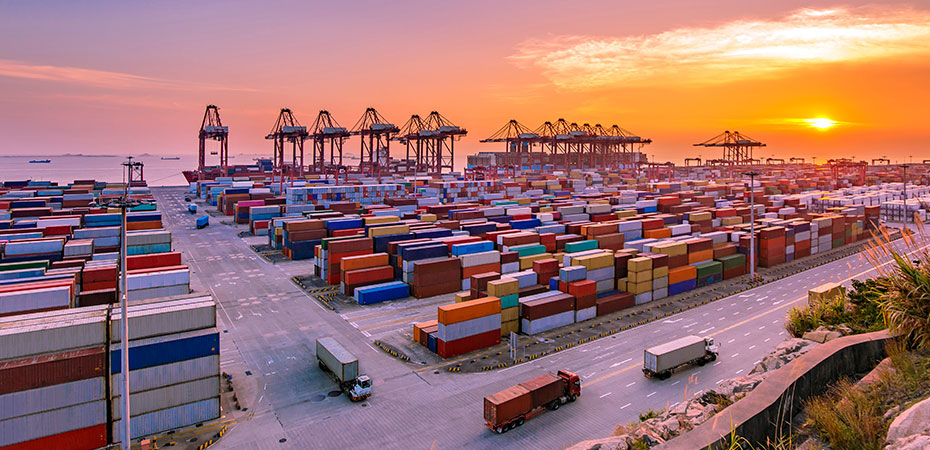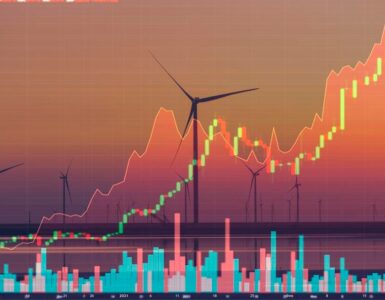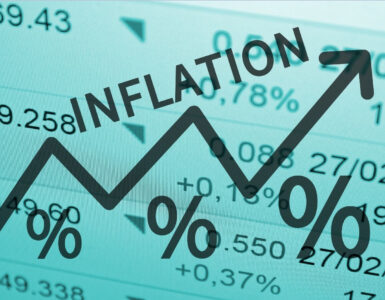Thanks to the rollout of coronavirus vaccines, the global economy is slowly starting to emerge from the pandemic.
But Covid-19 has left one very destructive economic issue in its wake: disruption to global supply chains.
The rapid spread of the virus in 2020 prompted shutdowns of industries around the world and, while most of us were in lockdown, there was lower consumer demand and reduced industrial activity.
As lockdowns have lifted, demand has rocketed. And supply chains that were disrupted during the global health crisis are still facing huge challenges and are struggling to bounce back.
This has led to chaos for the manufacturers and distributors of goods who cannot produce or supply as much as they did pre-pandemic for a variety of reasons, including worker shortages and a lack of key components and raw materials.
Related: We Are Now Living in “Supply Chain Hell”
Different parts of the world have experienced supply chain issues that have been exacerbated for different reasons, too. For instance, power shortages in China have affected production in recent months, while in the U.K., Brexit has been a big factor around a shortage of truck drivers. The U.S. is also battling a shortage of truckers, as is Germany, with the former also experiencing large backlogs at its ports.
Situation ‘will get worse’
Unfortunately, experts like Tim Uy of Moody’s Analytics say that supply chain problems “will get worse before they get better.”
“As the global economic recovery continues to gather steam, what is increasingly apparent is how it will be stymied by supply-chain disruptions that are now showing up at every corner,” Uy said in a report last Monday.
“Border controls and mobility restrictions, unavailability of a global vaccine pass, and pent-up demand from being stuck at home have combined for a perfect storm where global production will be hampered because deliveries are not made in time, costs and prices will rise, and GDP growth worldwide will not be as robust as a result,” he said.
“Supply will likely play catch up for some time, particularly as there are bottlenecks in every link of the supply chain—labor certainly, as mentioned above, but also containers, shipping, ports, trucks, railroads, air and warehouses.”
Supply chain bottlenecks — congestion and blockages in the production system — have affected a variety of sectors, services and goods ranging from shortages of electronics and autos (with problems exacerbated by the well-known semiconductor chip shortage) to difficulties in the supplies of meat, medicines and household products.
Amid higher consumer demand for goods that have been in short supply, freight rates for merchandise coming from China to the U.S. and Europe have soared, while a shortage of truck drivers across both the latter regions has exacerbated the problem of getting goods to their final destinations, and has led to high prices once those products hit store shelves.
The pandemic has only served to highlight how interconnected, and how easily destabilized, global supply chains can be.
At their best, global supply chains lower costs for businesses, often due to reduced labor and operating costs linked to the manufacturer of the products they want, and can spur innovation and competition.
But the pandemic has highlighted deep fragilities in these networks, with disruption in one part of the chain having a ripple-down effect on all parts of the chain, from manufacturers to suppliers and distributors with disruptions ultimately affecting consumers and economic growth.
Supply chain crisis hits growth
As economies get back on their feet, the supply chain crisis has come to the fore as one of the biggest challenges governments now face. Covid-weary citizens are eager to spend again but are finding goods either absent or much more expensive.
The issue is now looming large ahead of Christmas, too, and last week, White House officials told Reuters that Americans could face higher prices and sparser shelves this festive season with the Biden administration trying to alleviate blockages at ports.
China and Europe are also experiencing growth problems on the back of supply chain issues. On Monday, China reported its third-quarter GDP grew a disappointing 4.9% from the previous quarter, as industrial activity rose less than expected in September (increasing by 3.1% below the 4.5% expected by Reuters) — with supply chain issues contributing to the slowdown in activity.
“Manufacturing was hit hard by supply chain disruptions due to Covid as some port operations were hit in the third quarter of 2021, and chip shortages continued in the quarter,” Iris Pang, chief economist of Greater China at ING, noted Monday.
Related: GM and Toyota Shut Down
She said that “supply chain disruptions are expected to last as freight rates are still high and chip shortages are still a critical issue for industries like equipment, automobiles and telecommunication devices.”
Last week, Germany’s top economists warned that “supply bottlenecks will continue to weigh on manufacturing production for the time being” and were likely to hamper growth in export-oriented Germany, Europe’s biggest economy.
Earnings impacted
Experts note that earnings are already starting to show the impact of the supply chain crisis. Invesco’s chief global market strategist, Kristina Hooper, noted last week that “supply chain fears are brewing″ with a number of U.S. companies flagging up warnings about rising costs related to supply chain disruptions and potentially lower earnings.
Hooper believed some of the factors contributing to supply chain issues, such as the labor shortage, will be worked out sooner than others. But she said the problem could have longer-lasting effects on some sectors.
“No matter where companies are, they are likely experiencing supply chain disruptions, higher input costs and some issues sourcing labor,” she said in a note last Thursday.
“However, some companies will be far more impacted than others. … A rise in cost will generally have the greatest impact on low-margin companies, which tend to be found in sectors such as transportation, general retail, construction and autos. Companies that should be least impacted are those with wide profit margins, limited raw material costs and small workforces. That should include growth sectors such as tech and health care,” she said, adding that “unfortunately, those sectors’ stock prices may temporarily suffer as bond yields rise.”
“Financials may be the standouts in this environment, especially as these companies would welcome higher yields. Another differentiating factor may be how much investment companies have made in technology to increase productivity.”
Hooper noted that some shortages, of semiconductors in particular, could improve soon, with projections for a return to normal levels of production by the second quarter of 2022. “However, more general supply chain disruptions are likely to continue in the shorter term, especially if there are additional Covid waves,” she added.
“In general, supply chain disruptions and higher input costs seem likely to be relatively transitory. … And so, for me, I’ll be paying close attention to this quarter’s earnings season, but I’ll be most concerned about companies’ guidance for the fourth quarter and beyond — especially how long they expect these conditions to last,” she said.
Source: CNBC










